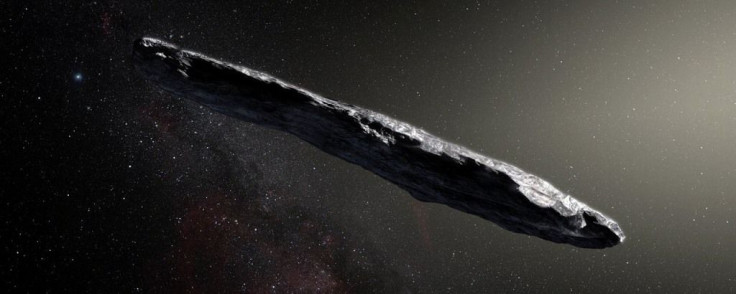689-Foot Asteroid Will Make Close Approach To Earth On Christmas Day
KEY POINTS
- A 689-foot asteroid will make its closest approach to Earth at 4:20 a.m. EST on Dec. 25
- The asteroid identified as 501647 (2014 SD224) is taller than the Space Needle in Seattle
- The space rock is not expected to hit Earth during its upcoming flyby
An asteroid taller than the Space Needle will be visiting Earth's vicinity just in time for the holidays, according to NASA's Center for Near-Earth Object Studies (CNEOS).
The near-Earth asteroid (NEA) identified as 501647 (2014 SD224) will be zipping past the planet on Christmas Day.
The object, which is hurtling through space at a speed of 21,600 miles per hour (34,700 kilometers per hour), is expected to make its closest approach to Earth at 4:20 a.m. EST on Dec. 25, according to CNEOS' close approach data table.
Measuring 689 feet (210 meters) across, the asteroid will be taller than the Space Needle in Seattle, Washington. Built for a World Fair in 1962, the Space Needle stands 604 feet (184 meters) tall. The NEA is also almost as tall as the 745-foot Golden Gate Bridge towers.
Asteroids of this size could cause catastrophic effects if they end up entering the Earth's atmosphere and crashing to the ground. Fortunately, the European Space Agency has not included the NEA in its Risk List.
Asteroid 501647 (2014 SD224) will harmlessly fly by Earth at a distance of 1.9 million miles (3 million kilometers) from the planet's surface — a safe enough distance for the space agency to presume that Christmas Day will be worry-free in terms of impact events.
The asteroid was first discovered on Sept. 22, 2014, in the Pan-STARRS 1 observatory and is classified as an Aten asteroid. Space rocks in this category have Earth-crossing orbits that intersect with that of the planet, making close approaches more likely to happen.
Near-Earth asteroids are rocky bodies in space that have been nudged by the gravitational attraction of nearby planets into orbits that cause them to enter the Earth's neighborhood.
Forming mostly from the warmer inner solar system between the orbits of Mars and Jupiter, asteroids are seen to be ideal sources of information when it comes to studying the origins of the universe due to their mostly unchanged debris.
"Today’s asteroids are the bits and pieces left over from the initial agglomeration of the inner planets that include Mercury, Venus, Earth, and Mars," CNEOS said on its website.

© Copyright IBTimes 2025. All rights reserved.





















